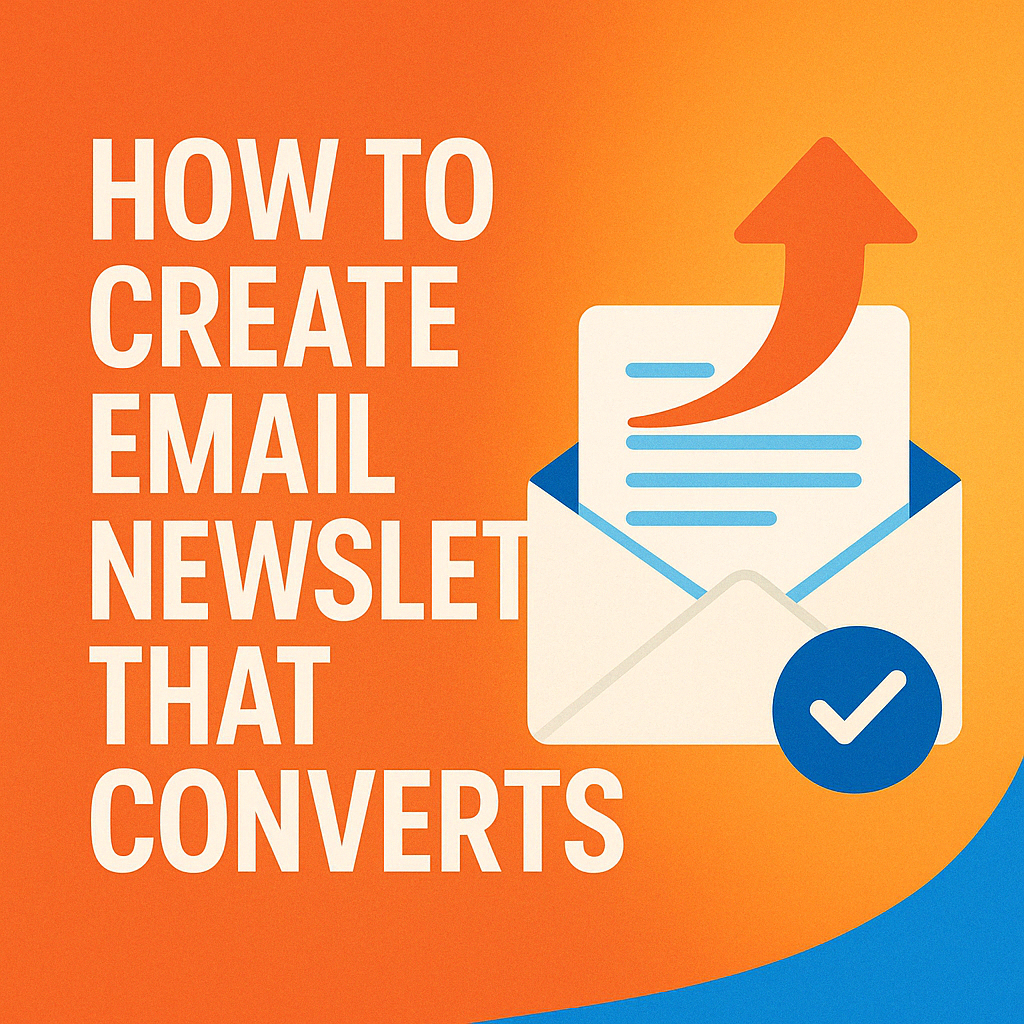
19
How to Create an Email Newsletter That Converts: 10 Proven Steps
Master the art of crafting an email newsletter that converts by following these 10 proven steps—from defining your goals and audience to testing and optimizing your campaigns for maximum engagement and ROI.
An email newsletter that converts can become your most powerful marketing asset—driving traffic, nurturing leads, and generating revenue. Whether you’re a small‑business owner, a marketer, or a content creator, these ten steps will guide you in designing, writing, and optimizing newsletters that turn readers into customers.
1. Define Your Goals & Audience
Before you draft a single word, clarify what you want your newsletter to achieve:
- Awareness: Introduce new products or services.
- Engagement: Boost blog readership or social media follows.
- Leads & Sales: Drive sign‑ups, purchases, or demo requests.
Action Items:
- Create buyer personas (age, interests, pain points).
- Align newsletter topics with each persona’s needs.
- Set measurable KPIs (open rate, click‑through rate, conversion rate).
2. Craft a Compelling Subject Line
Your subject line is your “first impression”—get it right or risk being ignored:
- Keep it concise: 6–10 words (40–60 characters).
- Use personalization: Include the recipient’s name or location.
- Create urgency or curiosity: “Last chance: 20% off sale ends tonight.”
- Avoid spam triggers: Steer clear of ALL CAPS, excessive punctuation, or spammy words like “Free!!!”
Examples of High‑Converting Subject Lines:
- “John, Your Exclusive Guide to Summer Marketing”
- “5 Quick Tricks to Double Your Open Rates”
- “Don’t Miss Out: Webinar Tomorrow at Noon”
3. Write a Conversational Preview Text
Preview text appears next to or below the subject line in most inboxes—it’s your second chance:
- Expand on the subject: Provide context or tease the content.
- Include a simple CTA: “See how inside →” or “Read more below.”
- Limit to 35–90 characters to ensure visibility on mobile devices.
4. Use a Mobile‑Responsive Design
Over 60% of emails are opened on mobile devices—ensure your layout adapts:
- Single‑column format: Easier to scroll and read.
- Large, tappable buttons: At least 44×44 px.
- Legible font sizes: Body text ≥14 px, headlines ≥20 px.
- Compressed images: Optimize for fast loading (≤200 KB each).
5. Structure Your Content for Scan‑Ability
Most readers skim—use formatting to guide their eyes:
- Headings & subheadings: Break content into clear sections.
- Bullet points & numbered lists: Highlight key takeaways.
- Short paragraphs: 1–3 sentences each.
- Whitespace: Surround text with breathing room.
6. Focus on Value‑Driven Content
Deliver content that solves problems and sparks action:
- Educational articles: “How to cut email production time in half.”
- Exclusive offers: “Subscribers only: 30% off this week.”
- Insider insights: “Our top 3 email templates for 2025.”
- User‑generated stories: Customer success case studies or testimonials.
7. Include a Clear, Single Call‑to‑Action (CTA)
Each newsletter should drive one primary action:
- Button style CTAs: Bold, colorful, and centrally placed.
- Action‑oriented copy: “Download the Free Guide,” “Book Your Demo,” “Shop the Sale.”
- Repeat placement: Once near the top and once at the bottom if the email is long.
8. Personalize & Segment Your Sends
Generic blasts underperform compared to targeted campaigns:
- List segmentation: By demographics, purchase history, or engagement level.
- Dynamic content: Swap images or offers based on segment attributes.
- Behavioral triggers: Send follow‑up emails when a subscriber clicks a link or abandons a cart.
9. Test, Measure & Optimize
Continuous improvement is the key to higher conversions:
- A/B testing: Subject lines, preview text, images, CTAs, and send times.
- Track core metrics:
- Open Rate = (Opened ÷ Delivered) × 100
- Click‑Through Rate (CTR) = (Clicks ÷ Opens) × 100
- Conversion Rate = (Conversions ÷ Clicks) × 100
- Analyze results weekly: Pause underperforming campaigns, double down on top performers.
10. Maintain Consistency & Build Trust
Frequency and reliability foster long‑term engagement:
- Regular schedule: Weekly, bi‑weekly, or monthly—set expectations.
- On‑brand voice & design: Consistent colors, logos, and tone.
- Transparent policies: Easy unsubscribe link, clear privacy statement.
- Feedback loops: Encourage replies, surveys, or polls to learn what readers want.
FAQs
What’s the ideal newsletter length?
Aim for 200–400 words of body content plus headlines, images, and CTAs—enough to provide value without overwhelming readers.
How often should I send newsletters?
Test frequencies, but most small businesses find once a week or bi‑weekly strikes the right balance between staying top‑of‑mind and avoiding fatigue.
When is the best time to send?
Data varies, but Tuesday–Thursday mornings (10–11 AM) often yield higher open and click rates. Always test what works best for your audience.
Should I use plain‑text or HTML emails?
Use HTML for branded, visually rich emails and plain‑text for more personal, one‑on‑one style messages. A mix of both keeps campaigns fresh.
How do I grow my newsletter list?
Offer valuable lead magnets (e‑books, checklists), use exit‑intent pop‑ups on your site, and promote sign‑ups in social media bios and posts.
Ready to Boost Your Conversions?
Follow these ten steps to craft an email newsletter that converts, and watch your open rates, click‑throughs, and sales climb. Start today by revising your next subject line using our proven tweaks—and take the first step toward a more profitable email program!
👉 Need a template to get started? Download our free high‑converting newsletter design kit now!
Contact
Missing something?
Feel free to request missing tools or give some feedback using our contact form.
Contact Us